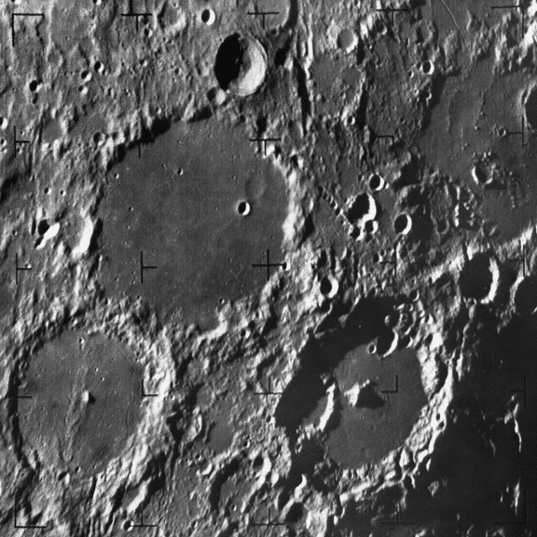Bill Dunford • Jan 06, 2014
The Last Flight of the Original Space Ranger
The first time many people saw the Moon up close was during a remarkable television event: millions watched live as an American spacecraft, the last of its kind, fell toward certain destruction on the lunar surface.
It was 1965, and the spacecraft was Ranger 9, the final mission in a trail-blazing series of robotic scouting expeditions that made human moon flights possible.

The "certain destruction" part was intentional. The goal of the final Rangers was simply to fly at the Moon, taking as many still pictures as possible with their onboard television cameras before they crashed at several kilometers per second (thousands of miles per hour).
It was a very long road to get even that far. The first six Ranger flights failed before they accomplished their mission, drifting off into space or failing to send word home. Rocket science was still a new business, and NASA was learning the intricacies of interplanetary flight.
With the Cold War rivalry on the line, the Ranger 7 mission finally succeeded in capturing close-up shots of the lunar landscape near Mare Nubium (the "sea of clouds") in 1964. In celebration, the spot was renamed Mare Cognitum, the "known sea." Ranger 8 performed reconnaissance at Mare Tranquillitatis, which came in handy before the decade was out. Both missions returned images with a detail never before seen by human beings. Among other things, pictures from the suicide flights appeared to confirm that the lunar surface was solid enough to support the coming landings.
The last Ranger performed its swan song live. After a 64-hour flight, Ranger 9 arrived at the moon on March 24, 1965 (which incidentally was about a day after the launch of the Gemini III astronauts).
Images from the probe's six onboard cameras were relayed in real time to a television audience. The BBC reported at the time that "viewers were taken on a dizzying journey as Ranger 9 crashed headlong into the pock-marked crater Alphonsus, near the centre of the Moon's face."
Following is a series of images taken during the last 15 minutes of the descent by the spacecraft's camera "B". Three large craters are initially visible: Albategnius, 96 km (60 miles) wide, Ptolemaeus, 137 km (85 miles) wide, and Alphonsus, 80 km (50 miles) across, where the probe finally impacts. The final frame here was taken at an altitude of about 13 km.

And these are fun. Turn out the classroom lights, crank up the film projector and enjoy this 60s-vintage review of the Ranger 7 flight and a highlight reel of planetary science in 1965. For additional technical details about the flight, here's the original JPL report on Ranger 9.

Support our core enterprises
Your support powers our mission to explore worlds, find life, and defend Earth. You make all the difference when you make a gift. Give today!
Donate

 Explore Worlds
Explore Worlds Find Life
Find Life Defend Earth
Defend Earth

